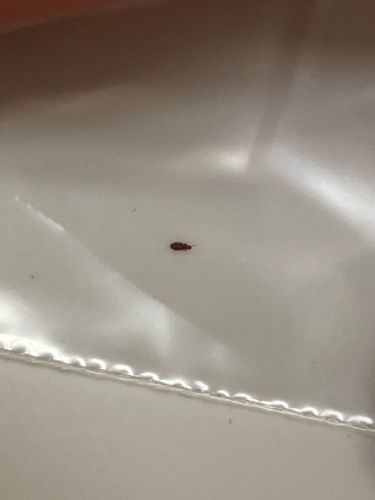Bed Bug
Scientific Name: Cimex lectularius
Order & Family: Hemiptera, Cimicidae
Size: Adult bed bugs are usually 4-5 mm (0.16-0.20 inches) long, oval-shaped, and flattened if unfed. After feeding, they become engorged, reddish-brown, and more elongated.

Natural Habitat
Bed bugs typically live in close proximity to human hosts. They prefer to hide in cracks and crevices in mattresses, bed frames, headboards, and other furniture near sleeping areas. They can also be found behind wallpaper, under loose floorboards, and in electrical outlets.
Diet & Feeding
Bed bugs are nocturnal ectoparasites that feed exclusively on the blood of warm-blooded animals, primarily humans. They pierce the skin with a stylet and feed for 3-10 minutes, usually unnoticeably, before returning to their hiding spots.
Behavior Patterns
Nocturnal activity is characteristic, as they emerge from hiding to feed on sleeping hosts. They are attracted to carbon dioxide and body heat. Bed bugs are wingless and cannot fly, but they can crawl quickly. They can survive for several months without a blood meal. Females lay 1-5 eggs per day, gluing them to surfaces.
Risks & Benefits
Potential risks include itchy red welts from bites, which can lead to skin infections from scratching. Bed bugs can cause allergic reactions in some individuals, and severe infestations can lead to anxiety, insomnia, and psychological distress. While they are not known to transmit diseases to humans, their presence is a nuisance and can be difficult and costly to eradicate. There are no known benefits to humans or the ecosystem.
Identified on: 9/17/2025